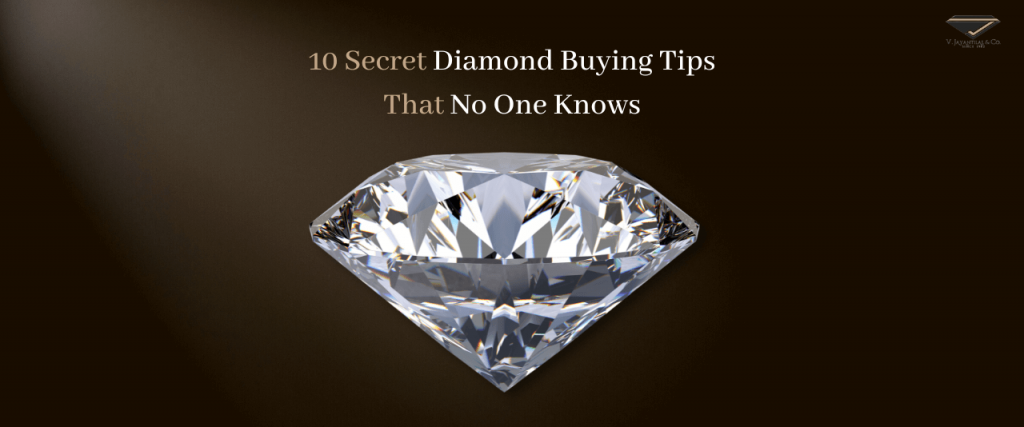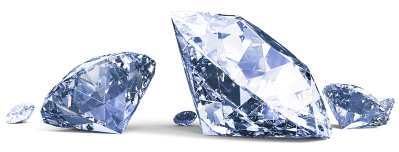Diamond Buying Tips: Shopping for a diamond can be confusing, especially if it's your first time. But if you become knowledgeable about the components that make up a diamond, purchasing one doesn't have to be intimidating. If you’re starting to venture into this world of diamond buying, let this guide help you make educated and stress-free decisions. In this post, we’ve rounded up all the vital diamond aspects you need to understand before buying a diamond. But it's not as difficult as you think.

Here are some diamond buying tips to consider before you go for shopping or buy diamond online.
4c's of diamond
The first tip from diamond buying tips is to know the 4Cs: color, clarity, cut, and carat weight. Created by the GIA, the 4Cs are the global standard for assessing the quality of diamonds and allow you to compare one diamond to another.
The next stage is to ask yourself, "Which C is the most important to me?" when you are familiar with the meaning of the 4Cs. Prioritising the 4Cs will enable you to swiftly whittle down your search results and find the diamond that's ideal for you. It will also help you work with your budget, knowing which items you are willing to spend more on and which you are willing to compromise on.
Having a basic understanding of these four diamond characteristics will help you have better conversations with your jeweller and give you the vocabulary to ask important questions.
Color
A diamond’s color is a measurement of how white it is. Other stones may have a yellow or brown hue, whereas chemically pure diamonds seem entirely colourless. After a diamond is mined, it is sent to a gem lab, where gemologists grade its color on a scale that begins with D (colorless) and ends with Z (light yellow), with D meaning that a diamond is completely colorless and Z meaning that a diamond has a light yellow or brown color. Less-colored diamonds in this colour range are more uncommon and highly prized. When shopping for a diamond, consider how important color is to you. D-colored diamonds are extremely rare and therefore extremely expensive. Therefore, you might want to think about choosing a less expensive white diamond that will still be stunning but much less expensive.
Clarity
When talking about a diamond's clarity, the terms "inclusions" and "blemishes" are used interchangeably. Clarity is graded on a scale from flawless to included. Flawless through VS2 Diamonds are generally what is called “eye clean,” meaning the diamond’s flaws can’t be seen by the naked eye. As with all other diamond gradings, the higher the grading, the more expensive the diamond. However, since many diamond faults are small, purchasing a diamond with minor imperfections might still result in a stunning diamond while saving you money. Decide how important perfection is to you before you purchase online.
Carat
The diamond's carat weight determines the diamond’s apparent size. In general, a diamond with a larger carat weight is rarer and more expensive, assuming the other Cs are equal. Carat is the most well-known of the 4Cs. However, a lot of people are misinformed and believe that a carat is a measurement of size rather than weight. It's critical to realise that carat does not always correspond to perceived size. So, while a diamond’s carat can give you a general idea of its size, it’s important to also consider its cut, shape, and table measurement when considering the size.
Cut
How effectively a diamond interacts with light is dependent on the quality of its cut. A diamond’s proportions, symmetry, and polish determine its brilliance, sparkle, and fire. The form of a diamond, which is a separate diamond quality, is not reflected in the diamond's cut. It’s a grading of how well a diamond was cut. The best diamond cut is excellent, followed in order by very good, good, fair, and poor.
When a diamond has an ideal cut, all the light that enters it is maximized, reflecting and refracting, creating a beautiful sparkle. The majority of the light that enters a diamond with a poor cut is lost via its sides or bottom, giving the diamond a dull appearance. The cut can have a major impact on the beauty of a diamond, so it’s important to keep that in mind when shopping. The cut grade is divided into three parameters: proportions, symmetry, and polish. According to the quality ratings of excellent (EX), very good (VG), good (G), or fair (F), each parameter is evaluated separately.
Shape
Diamonds come in various shapes. The most popular and expensive diamond form is the round brilliant cut. Since round diamonds have the highest sparkle, they are quite valuable.
The remaining diamond shapes are called fancy shapes. While the square or rectangular forms, such as the Asscher, are step cuts, others, such as the marquise, pear, and heart, are essentially variations of the round brilliant cut. The most significant influence on a diamond's aesthetic may come from its form. Therefore, take into account which form is most appealing to you aesthetically while choosing your diamond shape. There are different levels of fire and scintillation in every fancy-shaped diamond.
Fluorescence
Fluorescence is a marker of how a diamond reacts to UV light. A diamond is regarded as fluorescent if it glows under UV light; otherwise, it is not fluorescent. On a scale from no fluorescence to intense fluorescence, this is rated. The fluorescence of a diamond can often appear blurry, even though it is difficult to perceive with the unaided eye. It's entirely up to you whether you desire fluorescence in your diamonds or not. If you’re unsure about how you feel about diamond fluorescence, you can always compare diamonds with and without fluorescence to see which you find more visually appealing.
Certificate
Buying Certified diamonds like GIA Certified Diamond by a respected gem laboratory is the safest method. The International Gemological Institute (IGI), Hoge Raad voor Diamant (HRD), and the Gemological Institute of America (GIA) are the three primary gem labs. By clearly stating a diamond's cut, color, clarity, and weight, certificates ensure its high quality and preserve the buyer's investment by enhancing the gem's ability to maintain value over time.
Pick a reputable jeweller
Since a diamond represents a large investment, you should purchase it from a jeweller you can rely on. Your jeweller should be knowledgeable, approachable, and able to explain how to purchase a diamond in straightforward terms. Tip Start by looking for a jeweller who has a degree from a reputable program that is approved globally, like the GIA Graduate Gemologist. A knowledgeable jeweller can help you buy diamonds by explaining the 4Cs of diamond quality and showing you the variations between stones that appear to be identical. They will nudge you to compare how many diamonds fit your price range.
Our only goal at V. Jayantilal & Co. is to do everything in our power to assist couples in reaching a significant life milestone. We always place a premium on education and favour quality over quantity.







